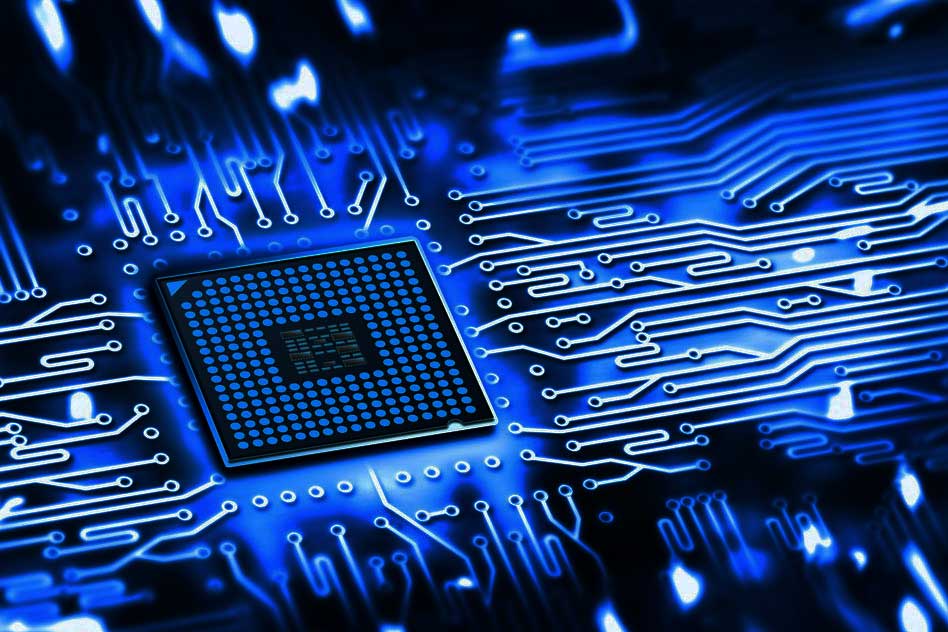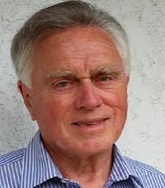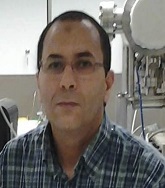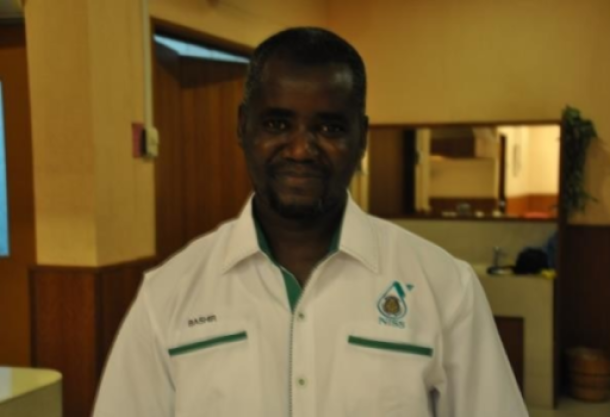
SENSORS 2020

Theme: RECENT DEVELOPMENT IN SENSORS AND THEIR IMPORTANCE
International Conference on Sensors and Electronic Instrumentation invites the global audience to take part in the meeting which is to be held on June 14-15, 2021 at Osaka, Japan. The primary subject of the meeting is "Invention and Innovation of New Concepts in the Field of Sensors and Electronic Instrumentation". It has broad meetings in which the primary Keynote introduction, YRF (Student Presentation), Oral Presentation, Posters, E-Poster introductions. This meeting unites the advancements in materials and brings the key supposition pioneers and thought pioneers in the field from around the globe for two escalated long stretches of logical introductions, organizing just as commitment with organizations creating developments in instruments and innovations in this space.
Sensors and Electronic Instrumentation showcase is by all accounts the continually drifting topic with cutting edge research advances. Each and every individual who investigates to fortify their insight and increase reached out about cutting edge specialized astuteness is free to introduce/get new thoughts. We give a decent open door by appreciating your refreshed examination and furthermore by distributing it in our separate diaries. We guarantee our participants come back to their place with the self-conviction to improve their capacities and equipped with confirmed ways to deal with work with us. This gathering will permit the participants to gain these new updates and offer their encounters with all around perceived speakers universally.
Acoustic wave sensors have been in business use for over 60 years. The broadcast communications industry is the biggest customer, representing ~3 billion acoustic wave channels yearly, essentially in versatile PDAs and base stations. These are normally surface acoustic wave (SAW) gadgets, and go about as band pass channels in both the radio recurrence and middle recurrence areas of the handset hardware.
Acoustic wave sensors are so named on the grounds that their location instrument is a mechanical, or acoustic, wave. As the acoustic wave spreads through or on the outside of the material, any progressions to the attributes of the proliferation way influence the speed as well as sufficiency of the wave. Changes in speed can be checked by estimating the recurrence or stage attributes of the sensor and would then be able to be connected to the relating physical amount being estimated.
Radiation sensor is a gadget for evaluating atomic, electromagnetic or light radiation. An atomic radiation locater sees atomic radiation by evaluating the spread of ionizing radiation of alpha particles, beta particles and gamma transmits. In like way proposed as a geiger counter, an atomic radiation identifier includes two basic parts: the arranging hardware and the geiger tube. The geiger tube is piled up with low-pressure idle gas like helium, argon or neon. In the event that radioactive radiation happens, the dormant gas is ionized. An anode inside the geiger tube chooses the proportion of ionized particles mathematically interfacing with the idea of the radioactive radiation. The radioactivity evaluation is then showed up on the LCD screen of the geiger counter or atomic radiation locater.
Biosensor is an expository gadget, utilized for the identification of a synthetic substance, that joins a natural segment with a physicochemical detector. The delicate organic component, for example tissue, microorganisms, organelles, cell receptors, proteins, antibodies, nucleic acids, and so forth., is a naturally determined material or biomimetic segment that communicates with, ties with, or perceives the analyte under examination. The naturally delicate components can likewise be made by organic designing. The transducer or the locator component, which changes one sign into another, works in a physicochemical way: optical, piezoelectric, electrochemical, electrochemiluminescence and so forth., coming about because of the collaboration of the analyte with the organic component, to effectively gauge and measure. The biosensor peruser gadget interfaces with the related hardware or sign processors that are principally liable for the showcase of the outcomes in an easy to understand way. This occasionally represents the most costly aspect of the sensor gadget, anyway it is conceivable to create an easy to use show that incorporates transducer and delicate component (holographic sensor). The perusers are normally hand crafted and made to suit the distinctive working standards of biosensors.
Fiber-optic sensor is a sensor that utilizes optical fiber either as the detecting component ("inborn sensors"), or as a methods for handing-off signs from a far off sensor to the gadgets that cycle the signs ("outward sensors"). Filaments have numerous utilizations in far off detecting. Contingent upon the application, fiber might be utilized in view of its little size, or on the grounds that no electrical force is required at the far off area, or on the grounds that numerous sensors can be multiplexed along the length of a fiber by utilizing light frequency move for every sensor, or by detecting the time delay as light goes along the fiber through every sensor. Time postponement can be resolved utilizing a gadget, for example, an optical time-space reflectometer and frequency move can be determined utilizing an instrument executing optical recurrence area reflectometry.
Fiber-optic sensors are additionally safe to electromagnetic obstruction, and don't direct power so they can be utilized in places where there is high voltage power or combustible material, for example, fly fuel. Fiber-optic sensors can be intended to withstand high temperatures too.
The field of quantum sensing manages the plan and designing of quantum sources (e.g., snared) and quantum estimations that can beat the presentation of any traditional system in various mechanical applications. This should be possible considering photonic systems or strong state systems.
In solid state material science, a quantum sensor is a quantum gadget that reacts to a boost. Typically this alludes to a sensor which has quantized vitality levels, utilizes quantum rationality to quantify a physical amount, or uses trap to improve estimations past what should be possible with old style sensors. There are 4 standards for strong state quantum sensors:
- The framework must have discrete, resolvable vitality levels.
- You can instate the sensor and you can perform readout (turn on and get answer).
- You can rationally control the sensor.
- The sensor communicates with a physical amount and has some reaction to that amount.
Electromagnetic sensors are non-ruinous assessment innovations and they are broadly utilized in wellbeing checking and harm identification for frameworks. The utilization of elastomagnetic (EM) (or magnetoelastic) stress sensor innovation in stress checking for steel links is depicted.
Lately, electromagnetic (EM) procedures have been broadly examined and investigated for various clinical applications, from early finding to treatment and observing. It is notable that natural tissues have explicit dielectric properties, which are generally recurrence dispersive.
Bio-MEMS is a condensing for biomedical (or organic) microelectromechanical frameworks. Bio-MEMS have significant cover, and is some of the time thought about equivalent, with lab-on-a-chip (LOC) and miniature all out investigation frameworks (μTAS). Bio-MEMS is regularly more centered around mechanical parts and microfabrication innovations made appropriate for natural applications. Then again, lab-on-a-chip is worried about scaling down and coordination of lab cycles and analyses into single (frequently microfluidic) chips. In this definition, lab-on-a-chip gadgets don't carefully have organic applications, albeit most do or are managable to be adjusted for natural purposes. So also, miniature absolute examination frameworks might not have natural applications at the top of the priority list, and are generally committed to synthetic investigation. An expansive definition for Bio-MEMS can be utilized to allude to the science and innovation of working at the microscale for organic and biomedical applications, which could possibly incorporate any electronic or mechanical functions. The interdisciplinary idea of Bio-MEMS consolidates material sciences, clinical sciences, medication, medical procedure, electrical designing, mechanical building, optical designing, substance building, and biomedical engineering. Some of its significant applications incorporate genomics, proteomics, atomic diagnostics, purpose of-care diagnostics, tissue designing, single cell examination and implantable microdevices.
Humidity sensor is an electronic gadget that gauges the moistness in its condition and changes over its discoveries into a comparing electrical sign. The proportion of dampness noticeable all around to the most noteworthy measure of dampness at a specific air temperature is called relative humidity. Relative humidity turns into a significant factor when searching for comfort. Humidity sensors differ generally in size and usefulness; some humidity sensors can be found in handheld gadgets, (for example, cell phones), while others are incorporated into bigger implanted frameworks, (for example, air quality checking frameworks). Humidity sensors are generally utilized in the meteorology, clinical, car, HVAC and assembling businesses.
Remote sensing is the procurement of data about an item or wonder without connecting with the article and in this manner rather than on location perception, particularly the Earth. Remote sensing is utilized in various fields, including topography, land looking over and most Earth science disciplines (for instance, hydrology, biology, meteorology, oceanography, glaciology, geography); it likewise has military, knowledge, business, monetary, arranging, and philanthropic applications. In current use, the expression "remote sensing" for the most part alludes to the utilization of satellite or airplane based sensor advances to recognize and characterize protests on Earth.
Telemetry is the in situ assortment of estimations or other information at distant focuses and their programmed transmission to accepting gear (media transmission) for observing. A telemeter is a physical gadget utilized in telemetry. It comprises of a sensor, a transmission way, and a showcase, recording, or control gadget. Electronic gadgets are broadly utilized in telemetry and can be remote or hard-wired, simple or computerized. Different advances are additionally conceivable, for example, mechanical, water powered and optical.
Nanomaterials are notable to have magnificent electrical, optical, warm, synergist properties and solid mechanical quality, which offer extraordinary chances to develop nanomaterials-based sensors or gadgets for observing natural pollutions in air, water and soil. Different nanomaterials, for example, carbon nanotubes, gold nanoparticles, silicon nanowires and quantum dabs, have been broadly investigated in identifying and estimating poisonous metal particles, harmful gases, pesticides, and unsafe mechanical synthetics with high affectability, selectivity and effortlessness.
An infrared sensor is an indicator that responds to infrared (IR) radiation. The two primary sorts of identifiers are thermal and photonic (photodetectors).The thermal impacts of the occurrence IR radiation can be finished numerous temperature subordinate marvels. Bolometers and microbolometers depend on changes in obstruction. Thermocouples and thermopiles utilize the thermoelectric impact.
Infrared thermography (IRT), thermal imaging, and thermal video are instances of infrared imaging science. Thermographic cameras as a rule recognize radiation in the long-infrared scope of the electromagnetic range (about 9,000–14,000 nanometers or 9–14 µm) and produce pictures of that radiation, called thermograms. Since infrared radiation is produced by all items with a temperature above supreme zero as per the black body radiation law, thermography makes it conceivable to see one's condition with or without obvious brightening. The measure of radiation transmitted by an article increments with temperature; in this manner, thermography permits one to see varieties in temperature.
Sensor interfacing is a blend of enhancement, sifting, and other sign molding just as simple to-advanced change. The simple to-computerized converter (ADC) might be in your microcontroller, yet you will at present need to make the sensor viable with the ADC input.
Signal conditioning is the control of a sign in a manner that sets it up for the following phase of preparing. Numerous applications include natural or basic estimation, for example, temperature and vibration, from sensors. These sensors, thusly, require signal conditioning before an information securing gadget can adequately and precisely measure the sign.
As per the new statistical surveying report Sensors market by application (POC, home diagnostics, research labs, biodefense, environmental monitoring, food and beverages industry), Technology, Product (wearable and non-wearable), and geography-global forecast to 2022', the market is required to be esteemed at USD 27.06 billion by 2022, developing at a CAGR of 8.84% somewhere in the range of 2017 and 2022. The market development is driven by the persistent innovative headways in the biosensors biological community, the increment in the utilization of biosensors for nonmedical applications, lucrative development in POC diagnostics, and ascend in the interest for glucose checking frameworks. The market in APAC anticipated that would develop at a high rate somewhere in the range of 2017 and 2022: The market in APAC is relied upon to develop at a high rate somewhere in the range of 2017 and 2022. The expanding number of individuals experiencing diabetes and government activities toward the change of the social insurance segment in the locale are boosting the interest for glucose screens, in which biosensors are utilized, in APAC.
The global market for sensors should grow from $173.4 billion in 2019 to reach $323.3 billion by 2024 at a compound annual growth rate (CAGR) of 13.3% for the period of 2019-2024. The global environmental sensing and monitoring technologies market should reach $25.9 billion by 2025 from $19.1 billion in 2020 at a compound annual growth rate (CAGR) of 6.3% for the forecast period of 2020 to 2025. The Industrial Sensors market size is expected to grow from USD 18.2 billion in 2020 to USD 29.0 billion by 2025, at a CAGR of 9.8%. Growing popularity of industrial 4.0 and IoT and increasing demand of industrial robotics are the key factors driving the growth of the market.
The force sensor market is expected to grow from USD 1.8 billion in 2019 to USD 2.3 billion by 2024, at a CAGR of 5.5%. Rising demand for industrial robots and growing safety features in automobiles are the key factors driving the growth of the force sensor market. Piezoelectric force sensor is expected to hold a major share in the force sensor market, by technology, during the forecast period. Piezoelectric sensors detect changes in pressure, acceleration, temperature, strain, and force and convert the acquired data to an electrical charge. Hence, it is mostly used in applications involving flex motions, touch, vibrations, and shock measurement. Piezoelectric sensors are used in various industries such as healthcare, aerospace, and consumer electronics, as well as nuclear instrumentation.
METTLER TOLEDO (US), Spectris (US), Flintec (Sweden), Vishay Precision Group (US), Honeywell (US), Gefran (Germany), Siemens (Germany), TE Connectivity (Switzerland), Senata technologies (US), Kistler (Switzerland), BCM Sensor Technologies. (Belgium), Baumer Group (Switzerland), Tekscan (US), Lorrenz Messtechnik (Germany), Futek Advanced Sensor Technology (US), Taiwan Alpha Electronic (Taiwan), Texas Instruments (US), ABB (Swizterland), Uneo (Taiwan), and Priamus System Technologies (Switzerland) are a few major companies dominating the force sensor market.
A portion of the real players working in the biosensors advertises incorporate Abbott Point of Care Inc. (US), Medtronic Inc. (US), F. Hoffman-La Roche Ltd. (Switzerland), Siemens AG (Germany), LifeScan Inc. (US), LifeSensors Inc. (US), Nova Biomedical Corp. (US), Acon Laboratories Inc. (US), Universal Biosensors (Australia), Pharmaco-Kinesis Corporation (US), Bayer Healthcare AG (Germany), Biacore (UK), Bio-Rad Laboratories Inc. (US), Biosensors International Ltd. (Singapore), Ercon Inc. (US), DuPont (US), and Sysmex Corporation (Japan).
Our point is to induce researchers to distribute their check and hypothetical results in but an awful lot detail as might be anticipated. There is no confinement at the length of the papers. The full exploratory subtleties ought to take delivery of with the goal that the consequences can be recreated. Electronic statistics and programming with admire to the whole subtleties of the figuring or trial technique, if not worthy to be disbursed frequently, can be stored as positive electronic material. The extension consists of but isn't always constrained to the accompanying: enzymes, antibodies, nucleic acids, entire cells, tissues and organelles, different natural or organically enlivened segments. These natural acknowledgment additives have to be held in near spatial touch with transducers inclusive of those dependent on the accompanying standards: electrochemical, optical, piezoelectric, thermal, magnetic, micromechanical. The diary will include an collection of subjects, such as: DNA chips, lab-on-a-chip innovation, microfluidic devices, nan biosensors and nanotechnology applied in biosensors, biosensor manufacture, biomaterials, biosensor interfaces and movie innovation ,In-vitro and in vivo applications.
- The report provides a quantitative analysis of the current market and estimations through 2014-2024, which would enable the stakeholders to capitalize on prevailing market opportunities
- Extensive analysis of the global apheresis equipment market by product type helps in understanding the types of equipment that are currently used along with the variants that would gain prominence in future
- Competitive intelligence highlights the business practices followed by leading market players across various geographies
- Comprehensive analysis of factors that drive and restrict the growth of the global apheresis equipment market is provided
- SWOT analysis highlights the internal environment of leading companies for effective strategy formulation
- The apheresis equipment market scenario is comprehensively analysed in accordance to the key regions
- Drug Delivery
- High-throughput Screening
- Point-of-Care Diagnostics
- Lab Analytics
- Proteomics
- Genomics
- Cell-based Assay
- Nanyang Technological University (NTU) Singapore
- National University of Singapore (NUS)
- The Hong Kong University of Science and Technology (HKUST)
- KAIST - Korea Advanced Institute of Science and Technology
- University of Hong Kong (HKU)
- Tsinghua University, China
- Fudan University, China
- City University of Hong Kong
- Peking University, China
- The Chinese University of Hong Kong (CUHK), Hong Kong
- Stanford University
- Harvard University
- California Institute of Technology (Caltech)
- University of Chicago
- Princeton University
- Cornell University
- Yale University
- Columbia University
- University of Pennsylvania
- Massachusetts Institute of Technology (MIT), United States
- Stanford University, Stanford University
- University of California, Berkeley (UCB), United States
- University of Cambridge, United Kingdom
- National University of Singapore (NUS), Singapore
- California Institute of Technology (Caltech), United States
- Delft University of Technology, The Netherlands
- Imperial College London, United Kingdom
- Kyoto University, Japan
- University of Oxford, United Kingdom
To be eligible for the award Students interested in having their posters considered for the Sensors and Electronic Instrumentation  conference, they must have submitted an abstract of their poster to the conference. The award committee will consider all posters that relate to the study of public opinion, whether they focus on theory, substantive findings, research methods, and/or statistical techniques used in such research. All posters will automatically be considered for the Poster award and the posters will take place in the conference venue and Poster Judges will select the best posters. The winners will be formally announced during the closing ceremony. The winners will receive a certificate award.
Outstanding Masters/Ph.D/Post. Doc Thesis work presentation Awards
Sensors and Electronic Instrumentation gives the opportunity to young researchers in the different field of conferences. The best participants are selected as per their research abstract before the conference. If you are a young and dynamic researcher than you can join our conferences to explore new idea and research. A panel of judges will select the best YRF. Best YRF will be recognized publicly at the end of the conference. The Best YRF Award will be given to the most outstanding presentation presented by a participant who has registered under the student category. Undergraduates, Master students, and Ph.D. students will be considered under this category. Selection of the YRF will be made on the basis of the participant contribution in the respective research field each submission will be accepted based on the sessions of the conference. Irrelevant submissions will be rejected. The acceptance and rejection of abstract submissions will be selected by the committee. All submissions will go through a quality checking. Final approved abstract will consider for YRF award.
Sensors and Electronic Instrumentation chooses a relevant keynote speaker to speak at conference. All accepted keynote speakers proposals will be considered for the Best Keynote Speaker Award. The committee will select a number of candidates for the award among the accepted proposals. The winner will be selected at the conference, taking into consideration both the proposal and the presentation. Best keynote speaker can help to boost motivation, change their way of thinking and make audience energized and inspired. For Keynote the person should be eminent or highly affiliated like Dean, Professor, HOD, Chair persons, CEO, CFO, MD etc. Selection of the Best Keynote Speaker will be made on the basis of the participant contribution and years of experience in the respective research field. Each submission will be accepted based on the quality of abstract and conference theme. Irrelevant submissions will be rejected .The acceptance and rejection of abstract submissions will be selected by the Organizing committee. All submissions will go through a quality checking. Final approved abstract will consider for Keynote award.
Sensors and Electronic Instrumentation believes in recognizing our best speaker. The best speaker is selected as per their research abstract before the conference. All winners are determined by a selection panel. This award is designed to recognize and identify outstanding speakers who have achieved recent extraordinary eminence and success. Being an outstanding speaker means to deliver a message that engages an audience. The outstanding speaker award will also be given on the basis of organization and professionalism of presentation, communication skills of the presenter and appropriate use of time. Each session will be evaluated separately. For speaker the person should be Professor, Researcher, Scientist, Entrepreneur etc. Selection of the Speaker will be made on the basis of the participant contribution in the respective research field. Each submission will be accepted based on the quality of abstract and conference sessions. Irrelevant submissions will be rejected. The acceptance and rejection of abstract submissions will be selected by the Organizing committee. All submissions will go through a procedure of quality checking by our team. Final approved abstract will consider for outstanding speaker award.
The organising committee can avail in the process of managing the multiple tasks that need to be done. Committee members, having a good erudition of the event management plan, are well placed to provide training, supervision and assistance to other personnel involved in the organisation of the event. Meetings International will honour as a best OCM the individual who has demonstrated their support and guidance throughout the conference. OCM should be eminent or highly affiliated like Dean, Professor, HOD, Chair persons, CEO, CFO, MD etc. Selection of the best OCM will be made on the basis of the participant contribution and years of experience in the respective research field. They must have good number of research papers and citations and should be more number of years of experience.
- Poster Size: Each poster should be approximately 1x1 M long. The title, contents and the author’s information should be clearly visible from a distance of 1-2 feet.
- Content: Use fonts such as Arial/Times New Roman in a reasonable font size that should be easy to read.
- The spacing between the lines should also be taken into consideration.
- A very simple format should be used representing all the details about the research carried by the author.
- Long narrated paragraphs should be avoided.
- Short phrases and bulleted points should be used in the poster to present the main highlights of the work done.
- Only abstracts submitted in English will be reviewed.
- Abstracts must not exceed 500 words (excluding the title, author affiliation and biography)
- Abstract should follow the instructions on the following template (Abstract Template).
- Do not include references or figures in the keynote abstract.
- Abstract should contain biography, photograph and short description about research
- Abstract must contain presenter name, affiliation and country
- Abstract title and abstract content should be relevant
Â
- Acoustic wave Sensors
- Radiation Sensors
- Bio Sensors
- Fiber-optic Sensor
- Quantum Sensors
- Electromagnetic Sensors
- Bio-MEMS
- Humidity Sensor
- Remote sensors and Telemetry
- Nanomaterials and Electronic Technology for Sensors
- Infrared Sensors, Devices and Thermography
- Sensor Interfacing and Signal Conditioning
- Biomaterials and Medical Applications
- Journal of Biochemical Engineering & Bioprocess Technology
- Journal of Electrical Engineering and Electronic Technology
- Advanced Biomedical Research and Innovation.





















































































































